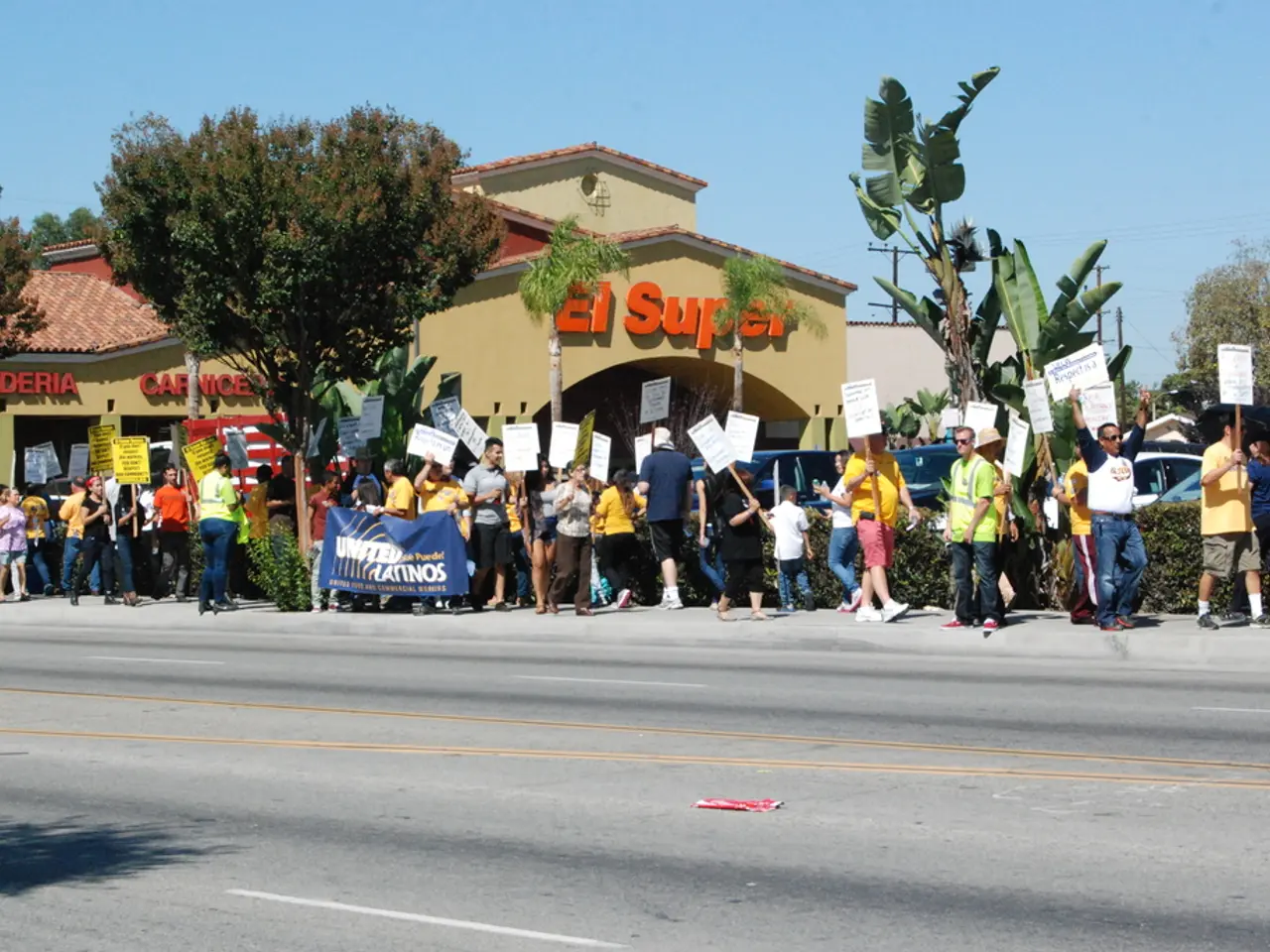Strategies for Crafting Political Campaign Videos for Social Media Platforms
In the digital age, political campaign videos have become a powerful tool for reaching voters on social media platforms. These videos, when done right, can capture attention quickly, convey emotions effectively, and help communicate complex political messages in an engaging and memorable way.
To create effective political campaign videos, best practices include starting with a strong hook within the first 5 seconds, using authentic, native-looking content, and clearly communicating your message in a concise format. The hook should be provocative and related to a key issue, such as "Property taxes up again?". Authentic content feels organic and performs better than highly produced videos, which can be ignored as "ads". Your message should be concise, introducing who is speaking, stating the problem in one sentence, presenting your solution or plan, and finishing with a clear call-to-action like "Tap to vote early".
It's crucial to tailor your message for each social media platform, fitting its style and audience. For instance, Instagram might be better for younger audiences, LinkedIn for professionals, and Facebook for a broader reach. Variety in content types, such as videos, photos, stories, and carousel posts, also helps to keep your audience engaged.
Interactive elements, like polls, stickers, or clickable flows, can turn passive viewers into active participants. A respectful and specific targeting strategy is essential, starting with your voter file or email list and then expanding via lookalikes and engagement retargeting. However, it's important to avoid overexposure by setting frequency caps to prevent audience fatigue or unfollows.
The landing page or action linked from the video should be mobile-optimized, loading quickly and including autofill forms for ease of donation or registration. Animated videos or explainer formats can improve message retention and shareability, making complex policies easier to understand and discuss.
Common mistakes to avoid include using content that looks too professional or polished, treating all platforms and content the same, ignoring interactive features, over-targeting, and launching videos without a strong, clear call-to-action.
Political campaign videos can be used to promote candidates, parties, or political causes across platforms like Facebook, Instagram, YouTube, and even TikTok. They aim to evoke an emotional response, such as hopefulness, anger, or excitement. Popular formats include candidate introduction videos, policy explainer videos, behind-the-scenes footage, voter testimonials, and rally highlights. Live streaming allows candidates to interact directly with voters in real time, answer questions, and create a sense of transparency and authenticity.
Future trends in political video marketing include AI-generated video personalization, interactive video formats, and increased use of short-form platforms like TikTok for political outreach. Social media analytics help identify which videos get the most engagement, allowing campaigns to refine their content strategy and focus on what resonates with voters.
By following these best practices and avoiding common pitfalls, political campaign videos can drive higher voter participation and engagement, making a significant impact in the political landscape.
- To boost engagement on social media platforms, consider implementing visual storytelling services that create interactive ads, such as polls and clickable flows, to turn viewers into active participants.
- For a successful blog post discussing political campaign video strategies, consider topics like tailoring video content for specific social media platforms, avoiding overexposure, and leveraging AI-generated video personalization.
- During consulting sessions with political candidates, discuss strategies for creating authentic, native-looking content, introducing who is speaking, stating the problem, presenting a solution or plan, and concluding with a clear call-to-action, such as "Tap to vote early."
- As a strategic approach for a marketing campaign, focus on creating a mix of content types – from videos and photos to stories and carousel posts – for various social-media platforms, and monitor engagement using social media analytics to refine your content strategy.





